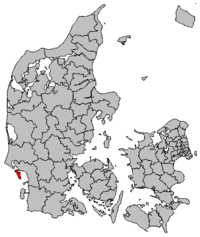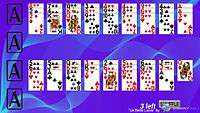
Artò
Artò is a frazione (and parish) of the municipality of Madonna del Sasso, in Piedmont, northern Italy.
Overview
It is a village located some km west from the Lake Orta.
History
Since 1928 Artò was a separate comune (municipality).
References
External links
![]() Media related to Artò at Wikimedia Commons
Media related to Artò at Wikimedia Commons

Artà
Coordinates: 39°42′N 3°21′E / 39.700°N 3.350°E
Artà is one of the 53 independent municipalities on the Spanish Balearic island of Majorca. The small town of the same name is the administrative seat of this municipality in the region (Comarca) of Llevant.
Population
In 2008 the municipality of Artà had a population of 7,113 recorded residents within an area of 139.63 square kilometres (53.91 sq mi). This equates to 50.9 inhabitants per km2. In 2006 the percentage of foreigners was 13.2% (890), of which Germans made up 3.9% (262). In 1991 there were still 136 illiterates in the municipality. 1,292 inhabitants had no education, 1,675 only a primary school certificate and 1,210 had secondary school leaving certificates. The official languages are Catalan and Spanish (Castilian). The Catalan dialect spoken on the island is known as Mallorquí.
Geography
Location
Artà lies in the northeast of the island of Majorca, around 60 km from the island's capital of Palma. The Massís d’Artà, the highest and most compact massif in the eastern mountain chain of the Serres de Llevant, occupies more than half the area of the municipality. The municipality is located on the western part of peninsula of Artà and is bordered in the west by the Bay of Alcúdia (Badia d’Alcúdia), and in the north by the Mediterranean sea where its coast lies opposite the neighbouring island of Minorca. The coast of Artà stretches for 25 kilometres and, so far, has escaped being developed. Particularly noteworthy are the beach and sand dune formations of sa Canova d’Artà, the flat coastal strip near the settlement of Colònia de Sant Pere, the high rocky coves of the Cap de Ferrutx and a large number of smaller bays that extend from s’Arenalet des Verger to Cala Torta.
ART image file format
ART is a proprietary image file format used mostly by the America Online (AOL) service and client software.
Technical details
The ART format (file extension ".art") holds a single still image that has been highly compressed. The format was designed to facilitate the quick downloading of images, among other things. Originally, the compression was developed by the Johnson-Grace Company, which was then acquired by AOL. When an image is converted to the ART format, the image is analyzed and the software decides what compression technique would be best. The ART format has similarities to the progressive JPEG format, and certain attributes of the ART format can lead to image quality being sacrificed for the sake of image compression (for instance, the image's color palette can be limited.)
Usage by AOL
The AOL service used the ART image format for most of the image presentation of the online service. In addition, the AOL client's web browser also automatically served such images in the ART format to achieve faster downloads on the slower dialup connections that were prevalent in those days. This conversion was done in the AOL proxy servers and could be optionally disabled by the user. This image conversion process effectively reduced the download time for image files. This technology was once branded as Turboweb and is now known as AOL TopSpeed.

Fanø
Fanø is a Danish island in the North Sea off the coast of southwestern Denmark, and is the very northernmost of the Danish Wadden Sea Islands. Fanø municipality is the municipality (Danish, kommune) that covers the island and its seat is the town of Nordby.
Island
Fanø is separated from the mainland by the Wadden Sea over a span of approximately five kilometres. The island is 16 km long and 5 km wide, and it is located off the coast from the city of Esbjerg to which it is connected by ferry. The ferry ride takes 12 minutes. The high ferry ticket prices that are often subject to price increases are considered by the locals to be a great threat to the local tourism industry.
A variety of environments are to be found on Fanø. Not surprisingly, a very common one is sand. The island's whole western shore is one long beach. The island's northwestern corner is a vast sandbank called "Søren Jessens Sand". Søren Jessen was an entrepreneur and captain from Hjerting, today the westernmost suburb of Esbjerg and the bank is named after him because his ship, the "Anne Catriane", stranded here in 1712.

La Belle Lucie
La Belle Lucie, The Fan, Clover Leaves, Three Shuffles and a Draw, Alexander the Great, Trefoil or Midnight Oil is a solitaire where the object is to build the cards into the foundations.
All cards are visible from the start, but this does not imply that this game is solvable with strategy. The default rule is very hard to win. The majority of games cannot be solved. For example, moving a single card onto another blocks that stack until both cards can be removed to the foundations. Any setup that has a lower card of a specific suit below a higher of the same suit, or all kings not on the bottom of each cascade cannot be solved without cheating. The shuffle and redeal is of little help. For each king left in the second redeal, there is a 66% chance that the cascade cannot be solved (if the king is not lowest). Moving aces out (Trefoil rule) has cosmetic character.
Rules

Fan (person)
A fan, or fanatic, sometimes also called aficionado or supporter, is a person who is enthusiastically devoted to something or somebody, such as a band, a sports team, a genre, a book, a movie or an entertainer. Collectively, the fans of a particular object or person constitute its fanbase or fandom. They may show their enthusiasm in a variety of ways, such as by promoting the object of their interest, being members of a fan club, holding or participating in fan conventions, or writing fan mail. They may also engage in creative activities ("fan labor") such as creating fanzines, writing fan fiction, making memes or drawing fan art.
Etymology
Merriam-Webster, the Oxford dictionary and other sources define "fan" as a shortened version of the word fanatic. The word first become popular in reference to baseball enthusiasts. Fanatic itself, introduced into English around 1550, means "marked by excessive enthusiasm and often intense uncritical devotion". It comes from the Modern Latin fanaticus, meaning "insanely but divinely inspired". The word originally pertained to a temple or sacred place [Latin fanum, poetic English fane]. The modern sense of "extremely zealous" dates from around 1647; the use of fanatic as a noun dates from 1650. However, the term "fancy" for an intense liking of something, while being of a different etymology, coincidentally carries a less intense but somewhat similar connotation to "fanatic". The word emerged as an Americanism around 1889.The Dickson Baseball Dictionary cites William Henry Nugent's work asserting that it was derived from the fancy, a term from England referring to the fans of a specific hobby or sport from the early 18th century to the 19th, especially to the followers of boxing. According to that theory, it was originally shortened to fance then just to the homonym fans.
Podcasts:
Latest News for: fan art
AI turned war photos into Ghibli scenes. Fans say Miyazaki would be horrified
The Daily Dot 28 Mar 2025Selena's killer, Yolanda Saldívar, denied parole while serving life in prison
Oakridger 28 Mar 2025The biggest reveals in New Yoko Ono biography include her mental health struggles, John Lennon's infidelity
Chicago Sun-Times 28 Mar 2025Jim Jarmusch gets dark: Indie filmmaker reveals his latest artistic turn in L.A. show
The Los Angeles Times 28 Mar 2025Selena Quintanilla-Pérez’s Family Applauds Yolanda Saldívar’s Parole Denial: ‘We Are Grateful’
The Wrap 28 Mar 2025Gronk-a-Mania set to run wild over WrestleMania weekend
The Call 28 Mar 2025'Smash,' a Broadway show about a show on Broadway, is 'very meta' and all too real
Burlington County Times 28 Mar 2025French Embassy Joins Studio Ghibli Craze, Shares Animated Avatars Of PM Modi And Macron
News18 28 Mar 2025Moana 2 Actors Have Great Ideas For How Their Characters Should Be In Disney Parks (And Of Course There Are Flying Bats Involved)
Cinema Blend 28 Mar 2025Ryan Reynolds Dad-Shamed for Child's NSFW Line as Kidpool
The Hollywood Gossip 28 Mar 2025Tales of Apollo and Hercules
British Theatre Guide 28 Mar 2025- 1
- 2
- Next page »


